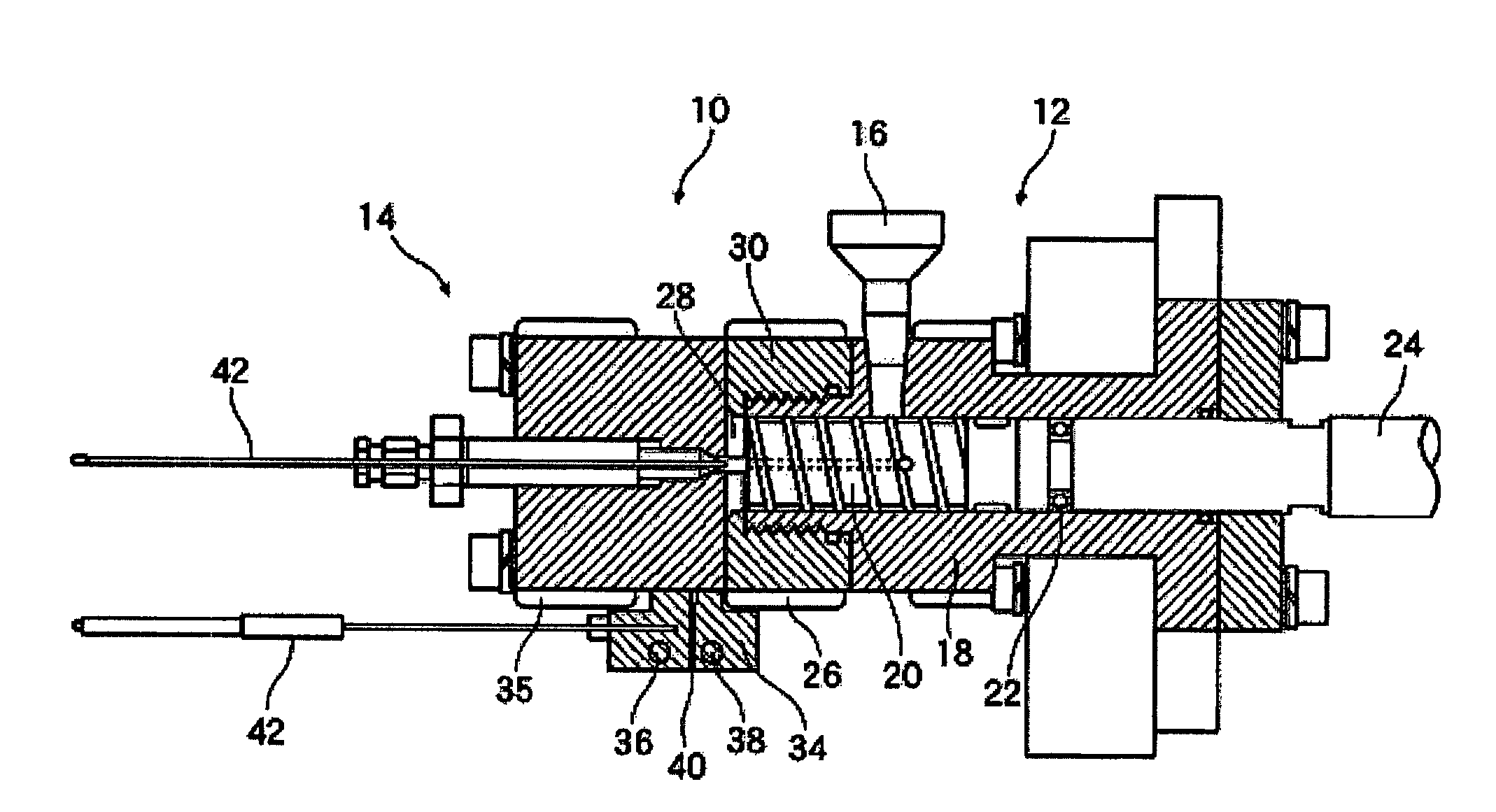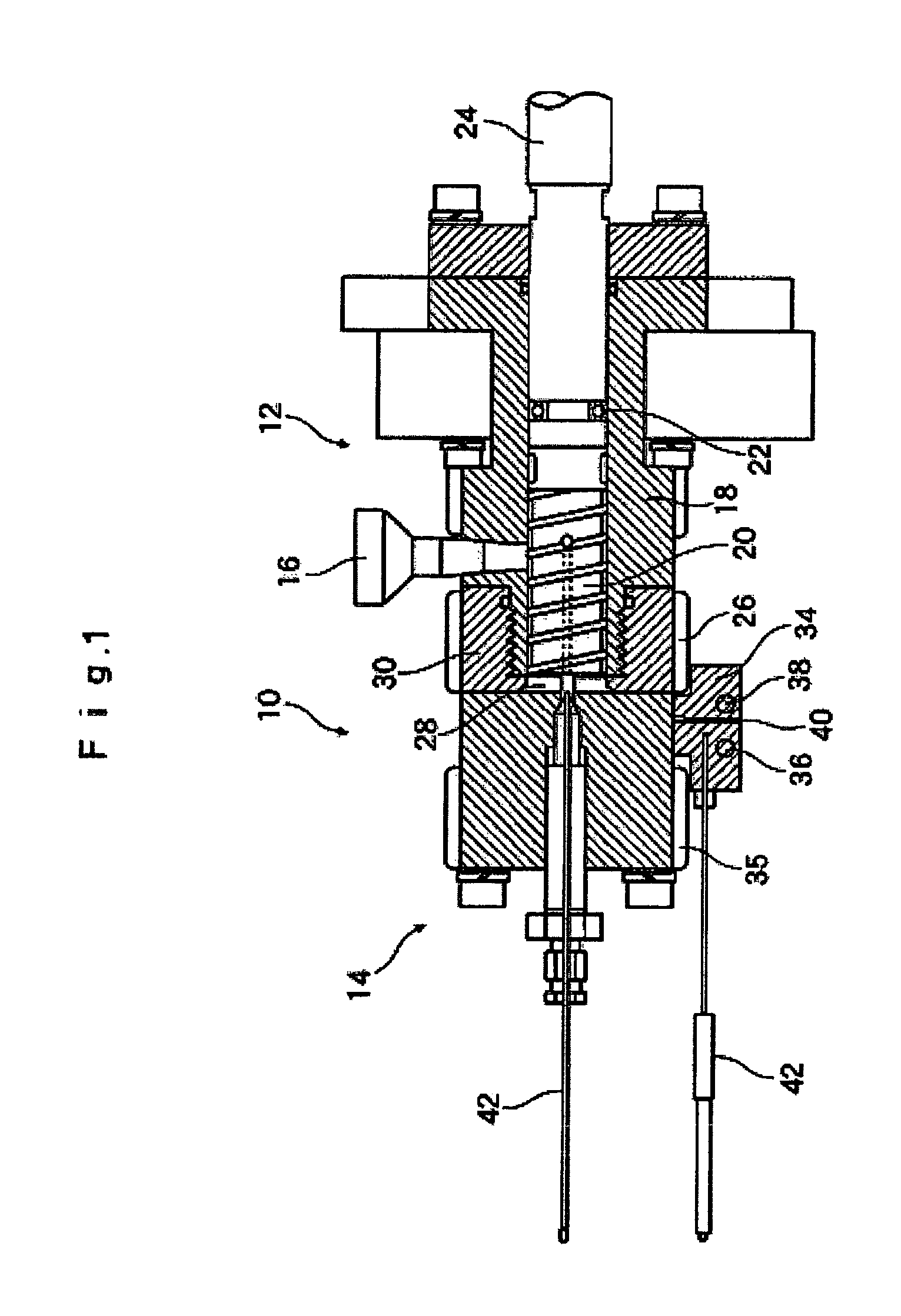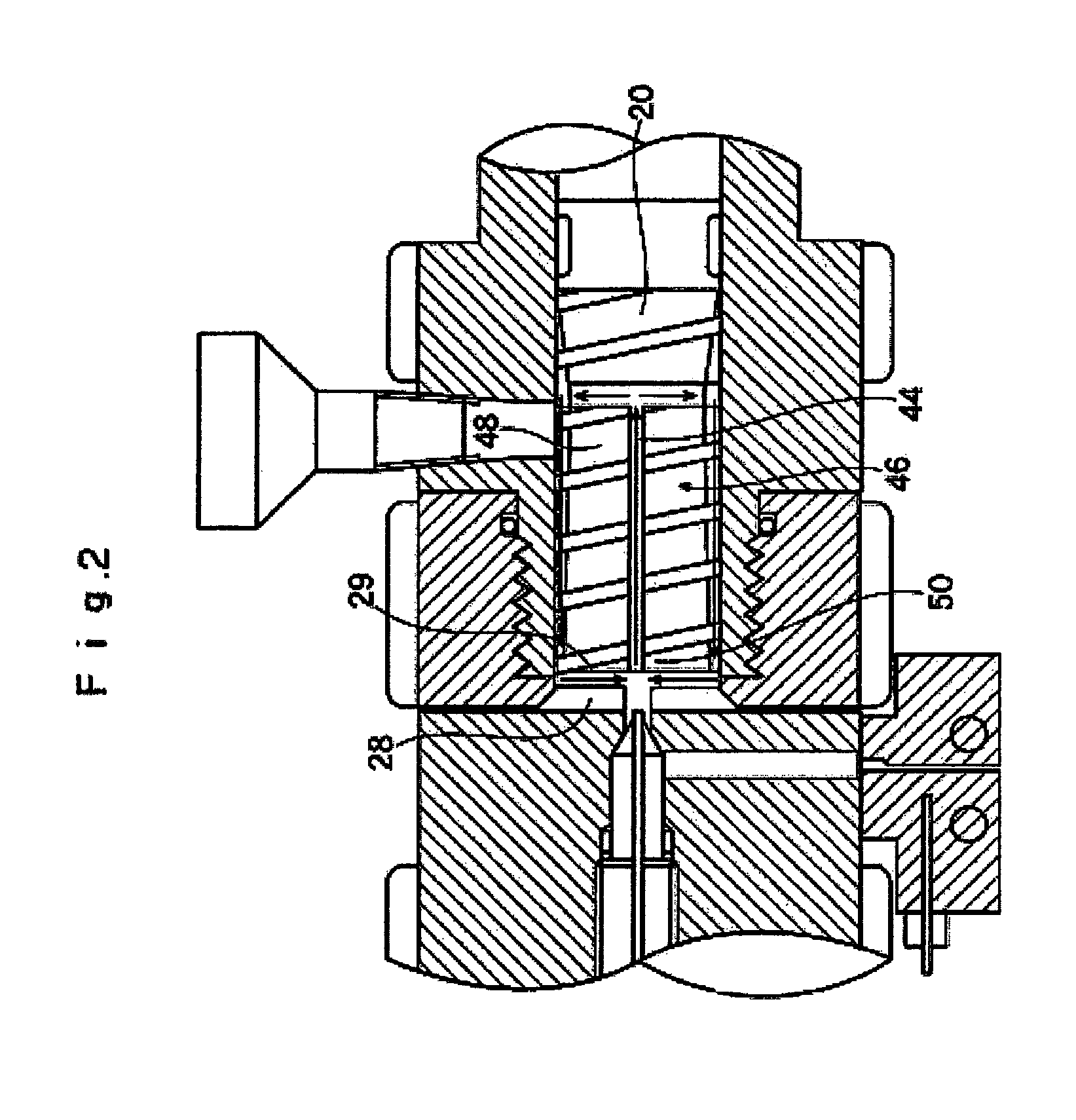Filler-dispersed melt-kneaded products, molded resin products thereof, and production method thereof
a technology of molded resin and meltkneading products, which is applied in the field of meltkneading methods for resin, can solve the problems of fast shrinkage in size and inability to control the siz
- Summary
- Abstract
- Description
- Claims
- Application Information
AI Technical Summary
Benefits of technology
Problems solved by technology
Method used
Image
Examples
example 1
[0194]Among the materials, a commercial product (Mw=170000, D-isomer content=1.2%) was used directly for polylactic acid (PLLA), while Bionolle 1020 by Showa Highpolymer was used for polybutylene succinate (PBS).
[0195]Also, Cloisite 30B by Southern Clay Products was used for layer silicate (clay).
[0196]These materials were pre-dried for 12 hours in a vacuum of 80° C., after which they were dry-blended at the specified ratios.
[0197]In dry blending, instead that 70 to 30 percent by weight of PLLA was combined with 30 to 70 percent by weight of PBS (or PBSA), 60 to 40 percent by weight (55 percent by weight in this example) of PLLA was combined with 40 to 60 percent by weight (45 percent by weight in this example) of PBS (or PBSA), in room temperature to constitute the blend composition, and clay was added by 0.1 to 15 percent by weight (1 to 12 percent by weight in this example), instead of 0.01 to 30 percent by weight, with respect to 100 percent by weight of the blend.
[0198]Next, ap...
example 2
[0203]A PLLA / PBS blend at a ratio of 55 / 45 was mixed with 8 percent by weight of clay and a sample produced in the same manner as in Example 1 was fractured at the liquid nitrogen temperature and the fractured surface was observed using a SEM. FIG. 5 shows the observation result of the fractured surface of each sample.
[0204]In low-shear kneading (screw rotation speed: 300 rpm), the porous phase size remained the same and never changed compared to when the clay content was 2%. In high-shear kneading (screw rotation speed: 1000, 2000 rpm), the porous phase size decreased in proportion to the added amount of clay.
[0205]In this case, the samples produced at 300 rpm are also defined as low-shear samples in this Specification. When the samples produced at this low shear speed were examined, they had the tendency to quickly shrink in size regardless of the added amount of clay, thereby making it impossible to control the size. On the other hand, it was found that under high shear condition...
example 3
[0206]A PLLA / PBS blend at a ratio of 55 / 45 was mixed with 0 to 12% of clay and a sample produced in the same manner as in Example 1 was fractured at the liquid nitrogen temperature and the fractured surface was observed using a SEM. FIGS. 6A and 6B summarizes how the porous phase size changed based on observation results.
[0207]In the figures, lines a, b and c indicate the results at 300 rpm, 1000 rpm and 2000 rpm, respectively.
[0208]As evident from FIGS. 6A and 6B, in high-shear kneading (screw rotation speed: 2000 rpm) the porous phase size increased to as much as 30 to 40 μm by adding clay by only 1%. This is probably due partly to a significant change in the resin viscosity achieved by adding a small amount of clay, and partly to a change in the interfacial tension between constituent polymers also achieved by adding clay.
[0209]Actually, the porous phase size decreased rapidly as the added amount of clay was further increased.
[0210]Also as evident from the figures, the porous pha...
PUM
| Property | Measurement | Unit |
|---|---|---|
| size | aaaaa | aaaaa |
| inner diameter | aaaaa | aaaaa |
| size | aaaaa | aaaaa |
Abstract
Description
Claims
Application Information
 Login to View More
Login to View More - R&D
- Intellectual Property
- Life Sciences
- Materials
- Tech Scout
- Unparalleled Data Quality
- Higher Quality Content
- 60% Fewer Hallucinations
Browse by: Latest US Patents, China's latest patents, Technical Efficacy Thesaurus, Application Domain, Technology Topic, Popular Technical Reports.
© 2025 PatSnap. All rights reserved.Legal|Privacy policy|Modern Slavery Act Transparency Statement|Sitemap|About US| Contact US: help@patsnap.com



